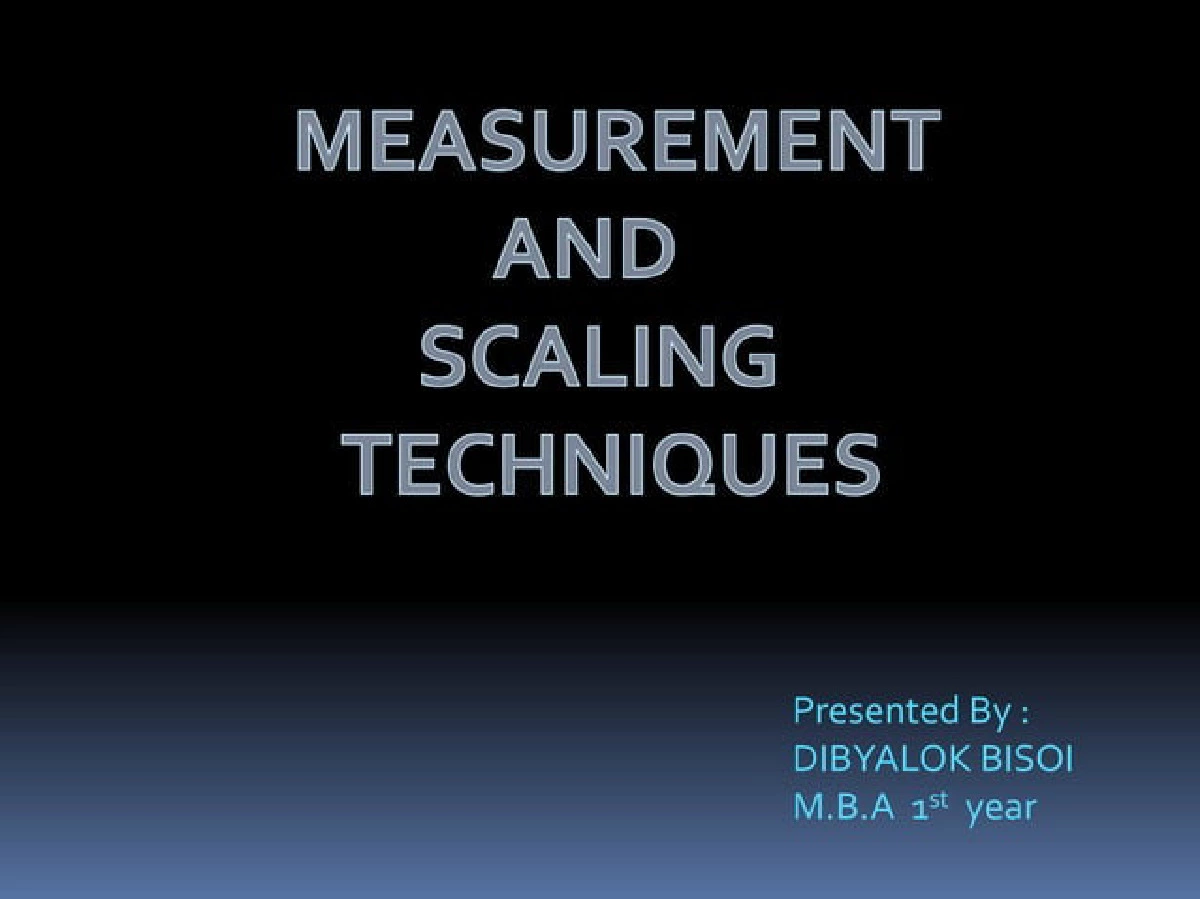
Measurement and Scaling Techniques in Research Methodology
It refers to the methods used to quantify variables and gather data systematically and reliably. These techniques are crucial for ensuring that researchers collect meaningful and accurate data that can be analyzed and interpreted effectively.
Common Measurement and Scaling Techniques
- Nominal Scale:
- Description: Categorizes variables into distinct, unordered categories.
- Example: Gender (Male, Female), Marital Status (Single, Married, Divorced).
- Ordinal Scale:
- Description: Orders variables into categories that have a meaningful rank or order.
- Example: Likert scales (e.g., Strongly Disagree, Disagree, Neutral, Agree, Strongly Agree), Educational level (High School, Bachelor’s, Master’s, PhD).
- Interval Scale:
- Description: Orders variables with equal intervals between points, but lacks a true zero point.
- Example: Temperature (in Celsius or Fahrenheit), Calendar dates (Month, Day).
- Ratio Scale:
- Description: Similar to interval scale but has a true zero point, where zero indicates the absence of the quantity being measured.
- Example: Height (in cm), Weight (in kg), Income (in dollars).
- Likert Scale:
- Description: Measures attitudes or opinions on a continuum typically with five or seven response options ranging from strongly agree to strongly disagree.
- Example: Asking respondents to rate their agreement with a statement on a scale from 1 to 5 (or 1 to 7).
- Semantic Differential Scale:
- Description: Measures the meaning of concepts or objects by having respondents rate them on a series of bipolar adjectives.
- Example: Asking respondents to rate a product on scales such as “cheap – expensive”, “old – new”, “friendly – unfriendly”.
- Visual Analog Scale (VAS):
- Description: Uses a straight line or continuum on which respondents indicate their position by marking a point.
- Example: Pain intensity scale (0-10), where 0 represents no pain and 10 represents the worst pain imaginable.
- Numerical Rating Scale (NRS):
- Description: Similar to VAS but uses discrete numbers instead of a continuous line.
- Example: Asking respondents to rate their satisfaction with a service on a scale from 1 to 10.
- Guttman Scale:
- Description: Hierarchically arranges items so that agreement with a higher-order item implies agreement with lower-order items.
- Example: A scale measuring attitudes towards environmental conservation, where agreement with broad statements implies agreement with specific statements.
- Bipolar and Unipolar Scales:
- Description: Bipolar scales have two opposite endpoints (e.g., positive-negative), while unipolar scales have only one endpoint (e.g., agree-disagree).
- Example: Bipolar scale: Asking respondents to rate their mood from happy to sad. Unipolar scale: Asking respondents to rate their agreement with a statement from strongly agree to strongly disagree.